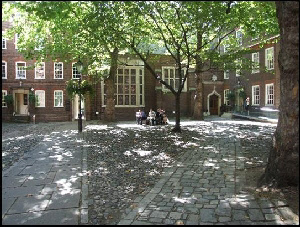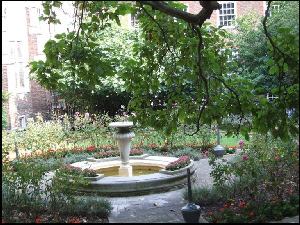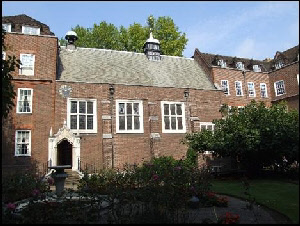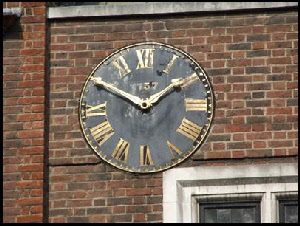Staples Inn is not so much an institution as an experience. It used to be one of the Chancery Inns that legal students signed up to and then moved on to Gray’s Inn. These days the buildings are full of (mostly) legal chambers, but they do not appear to have a teaching motive, as Gray’s Inn does. Dickens had a very soft spot for Staples Inn and you can see why in the pictures on this page. If you leave Holborn and go up to High Holborn, you’ll see an archway under the big black and white Tudor building on the intersection of Grays Inn Rd and High Holborn. You will walk into the cool, dappled light of the courtyard right. You can read the signs over the doorways and discover that when they rebuilt the buildings after a bomb destroyed them in the Blitz, they used as many timbers from the original buildings as they could find. There is an archway in the building on the other side of the square and you then walk into the beautiful garden immediately below with its lovely fountain.
Dickens described Staples Inn as a ‘little nook composed of two irregular quadrangles’ in Edwin Drood. You have to agree with him. It’s not public land like a park, but there are no restrictions except you can be removed by the servants if you make noise or enter with a dog….
Dickens: “It is one of those nooks the turning into which out of the clashing street, imparts to the relieved pedestrian the sensation of having put cotton in his ears, and velvet soles on his boots. “ I couldn’t agree more, the atmosphere is still exactly as Dickens described it.
Dickens further says, “Moreover, it is one of those nooks which are legal nooks; and it contains a little Hall (below) with a little lantern in its roof: to what obstructive purposes devoted, and at whose expense, this history knoweth not.”
The clock, dated 1757, is accurate. You won’t be late back to work. You can just see this clock on the Hall, by the windows above the door.




